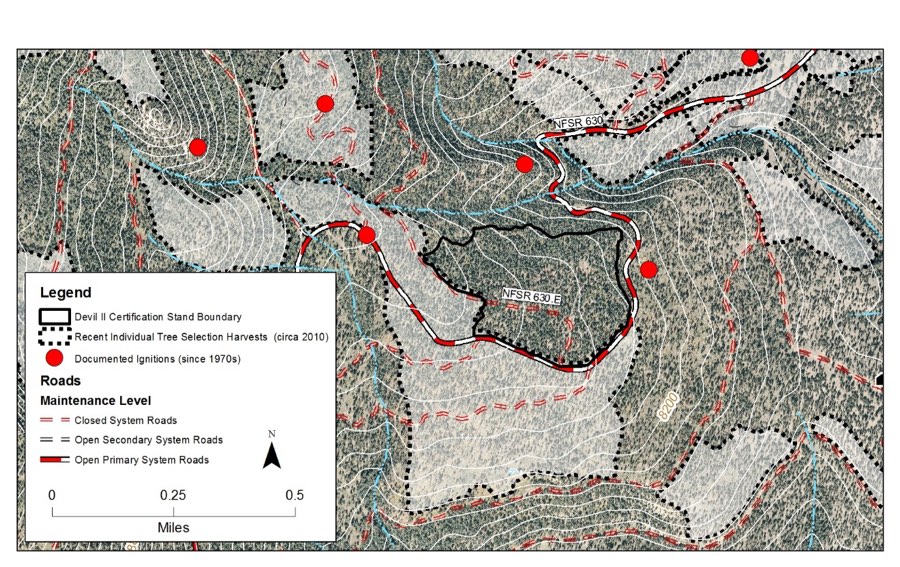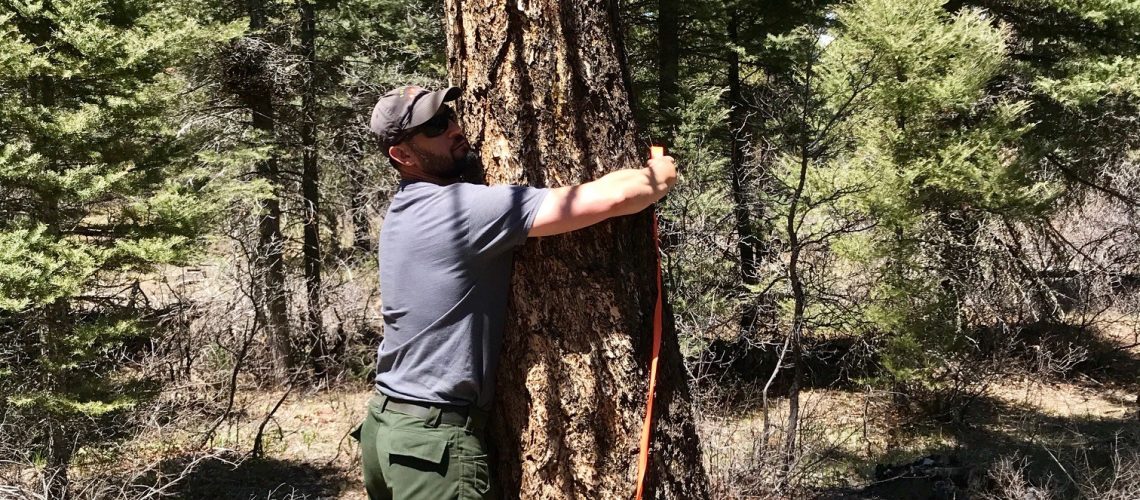On Community Wildfire Preparedness Day, several fire management practitioners, land managers and local residents came together to discuss the silviculture and marking techniques used to manage mixed-conifer forests in Southwestern Colorado. The event was organized by leaders of a prescribed fire training exchange (TREX) and local partners as an alternate activity to implementing prescribed fire since weather conditions did not allow the use of fire. Instead, during the Saturday training, attendees learned about the science, economics and decision making required to manage forests in this part of the world, and the trade-offs required to make a contract cost-effective and realistic.
The first half of the workshop included a discussion led by SJNF Silviculturalist, Matt Tuten, on the ecology, forest health concerns and objectives for the management of mixed-conifer forest. After, participants broke up into groups and flagged trees for contractors to leave in place in the mixed-conifer forest (See map below). Most of the unmarked trees will be harvested in the coming years by Forest Health Co., which has a long-term stewardship contract with the San Juan National Forest. Some of goals tasked to the group were to leave diverse tree species of diverse ages, hit the target density of 55 ft3/acre conifer basal area, and designate some high quality trees for both current and future harvest.
Although many of the participants were experts in wildland firefighting, forest ecology, or wood harvesting and milling, few knew about the myriad factors that go into silviculture, especially at a tree-by-tree scale. For participants, this effort linked the goals of forest restoration with the field practice of implementing management prescriptions through tree marking. The workshop also offered a chance to share perspectives and practices from within the 2-3-2 landscape with local citizens and land managers, as well as fire management practitioners from outside of the 2-3-2 area.
For more details on the background and objectives shared with the group, see this handout.
Sponsors and Organizers:
TREX
Chama Peak Land Alliance
San Juan National Forest
San Juan Headwaters Forest Health Partnership
Mountain Studies Institute
National Forest Foundation
The Nature Conservancy
Southern Rockies Fire Science Network
Natural Resources Conservation Service

Jeremy Bailey, Associate Director of Fire Training at The Nature Conservancy, flags a tree the workshop group decided to leave in the forest.

Matt Tuten, right, teaches participants about the silvicultural process, including how to determine density of trees and which ones to keep or cut.

A map of the treatment area on the San Juan National Forest.

